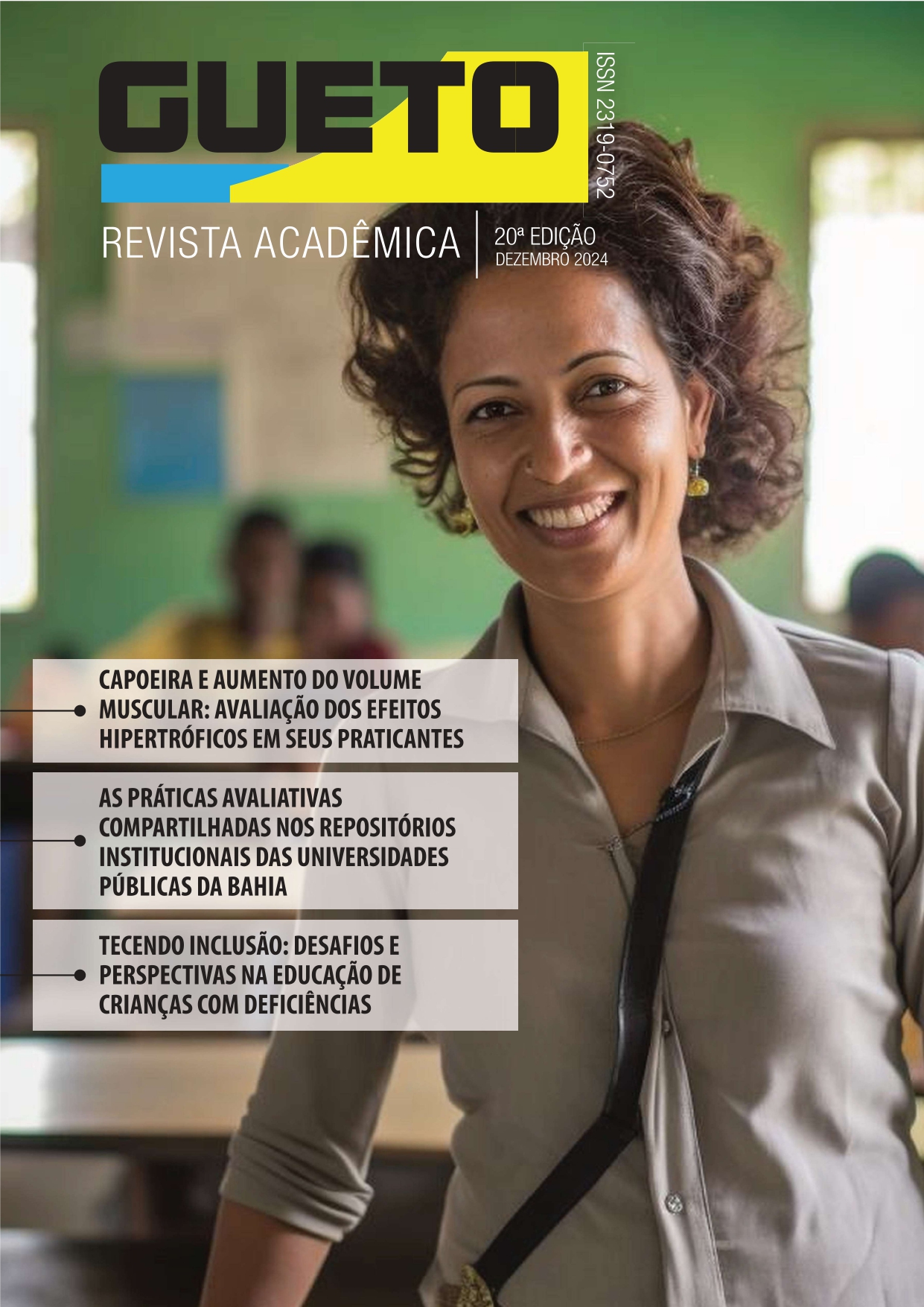TECENDO INCLUSÃO: DESAFIOS E PERSPECTIVAS NA EDUCAÇÃO DE CRIANÇAS COM DEFICIÊNCIAS.
WEAVING INCLUSION: CHALLENGES AND PERSPECTIVES IN THE EDUCATION OF CHILDREN WITH DISABILITIES.
Keywords:
Educação Inclusiva, Formação de Professores, Políticas Educacionais, Adaptação Escolar, DiversidadeAbstract
This study addresses the challenges and perspectives of inclusive education for children with disabilities, highlighting teacher training, educational policies, and school adaptation. Objectives: To investigate the obstacles faced in implementing inclusion, analyze teacher training, and explore strategies to create accessible and welcoming school environments. The research is justified by the urgent need to promote inclusive and equitable education that ensures equity and celebrates diversity, enriching the school environment and preparing students for life in society. Methodology: Qualitative approach, centered on literature review. Relevant academic articles, books, and official documents were analyzed, focusing on content analysis to identify significant themes and patterns. Authors such as Batista and Mantoan (2005), Magalhães (2006), Alves and Matsukura (2012), Rodrigues and Lima-Rodrigues (2020), and Tardif (2002) provided the theoretical basis for this study. Results: The research reveals that ongoing and specific teacher training is essential for successful inclusion. Furthermore, resistance from some educators can be overcome through awareness-raising programs. School infrastructure needs to be invested in accessibility, and pedagogical practices must be adapted to the individual needs of students. Educational policies play a vital role in promoting inclusion, but their effective implementation is essential. Conclusion: The importance of ongoing teacher training, adaptation of pedagogical practices, and support from educational policies for building a truly inclusive school is highlighted. Inclusion should not be seen as a burden, but as an opportunity for growth and learning for all.
Downloads
References
ALVES, L. M.; MATSUKURA, T. S. Acessibilidade e inclusão escolar: desafios e possibilidades. Revista Brasileira de Educação Especial, v. 18, n. 2, p. 235-248, 2012.
BATISTA, C.; MANTOAN, M. T. E. Inclusão escolar: o que é? Por quê? Como fazer? São Paulo: Moderna, 2005.
MAGALHÃES, J. Formação de professores para a educação inclusiva. Revista Educação e Pesquisa, v. 32, n. 3, p. 521-536, 2006.
MELLO, G. Práticas pedagógicas inclusivas: desafios e possibilidades. Revista Educação Especial, v. 12, n. 1, p. 45-58, 2000.
RODRIGUES, D.; LIMA-RODRIGUES, M. Educação inclusiva: uma abordagem crítica. Revista Brasileira de Educação, v. 25, n. 1, p. 123-138, 2020.
TARDIF, M. Saberes docentes e formação profissional. Petrópolis: Vozes, 2002.
UNESCO. Declaração de Salamanca e linha de ação sobre necessidades educativas especiais. Salamanca: UNESCO, 1994.
Downloads
Published
How to Cite
Issue
Section
License
Copyright (c) 2024 Revista Acadêmica GUETO

This work is licensed under a Creative Commons Attribution-NonCommercial-NoDerivatives 4.0 International License.





